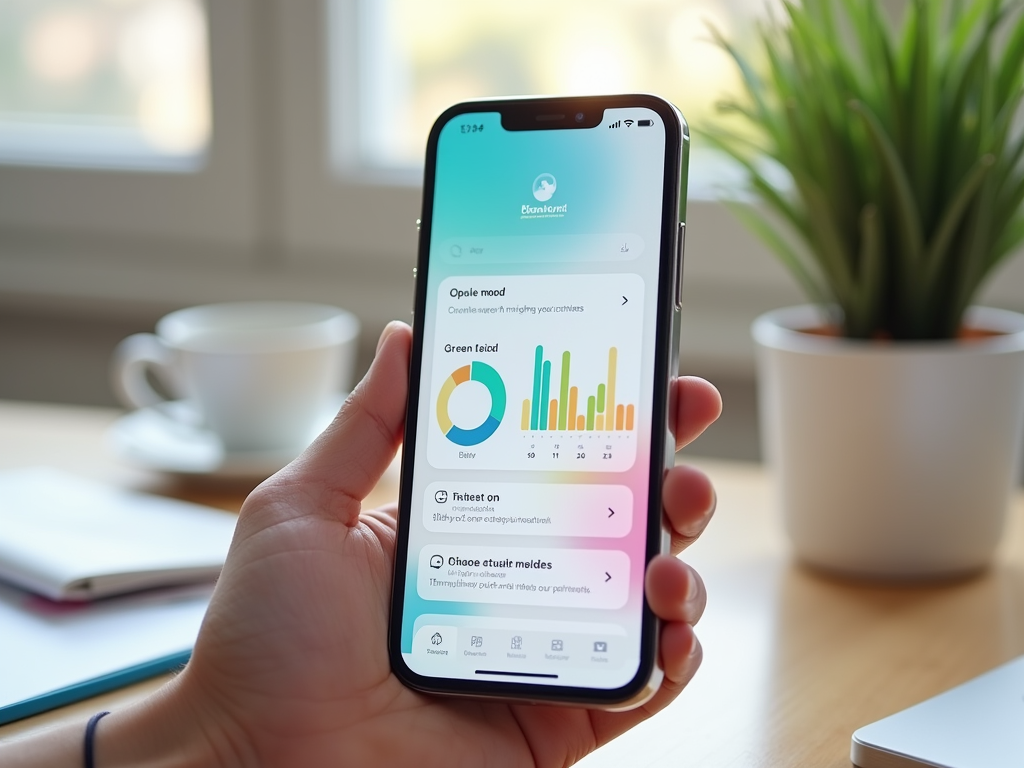In the quest for happiness, many of us find ourselves overwhelmed by the whirlwind of daily emotions that subtly, yet significantly, shape our mental landscape. This exploration led me to a fascinating intersection between technology and well-being: emotional data analysis using AI. With the potential to unveil hidden patterns and triggers, I decided to give ChatGPT, a powerful language model, a two-month journey into my emotional world. Through this venture, not only did I aim to discover insights that could elevate my happiness, but I also wanted to understand how technology can form a supportive role in mental health. The results? Eye-opening. By leveraging an AI’s analytical prowess, I uncovered not just fleeting emotions but a constellation of factors influencing my happiness levels.
Understanding emotional data involves recognizing its many nuances and forms. Emotions are fundamental to our human experience, and tracking them can be a game changer for anyone seeking enhanced mental health. More than just a number on a mood tracker, emotional data encompasses a symphony of feelings that rise and fall, influenced by a myriad of external and internal factors. Embracing the practice of documenting these fluctuations allows individuals to create a personal map of their emotional journeys. This map can reveal patterns over time, helping to decode what truly leads to upliftment and what might cause distress. The noteworthy insight is that our emotional experiences aren’t isolated—they interact with one another in complex ways, forming a tapestry of our mental well-being.
Understanding Emotional Data

Once we dive deeper, it’s crucial to categorize emotional data into actionable segments. The following types stand out:
- Daily Mood Logs: Entries that show the prevailing emotions each day.
- Triggers and Responses: Events or situations that provoke specific emotions.
- Positive and Negative Experiences: Reflections that document what brought joy or sadness.
How ChatGPT Analyzes Emotional Data

To streamline my emotional data analysis, I turned to ChatGPT, an AI that excels at processing vast information efficiently. This advanced model utilizes natural language processing algorithms to interpret nuances in the data, offering insights that might elude a human eye. The analysis process begins with inputting my collected emotional records into the system. Here, various algorithms work synergistically to identify patterns, correlations, and trends. This invaluable process makes it possible to distill my two months’ worth of data into meaningful and digestible insights. While I had my suspicions about certain triggers and emotional states, the AI provided clarity in unexpected ways.
The Process: Gathering Two Months of Emotional Data
Gathering emotional data proved to be an enlightening and, at times, challenging task. By employing a combination of journaling apps and written reflections, I meticulously documented my feelings every day. This consistent tracking was essential, as emotion fluctuates frequently, and capturing it in real-time ensures accuracy in the final analysis. Nevertheless, I encountered some hurdles such as occasional reluctance to log negative emotions or the tendency to forget to record feelings during particularly busy days. Adapting to these challenges required discipline but ultimately paid off when it came time for the analysis. By understanding my emotional processes through this raw data collection, I was setting the stage for transformative insights.
| Type of Emotional Data | Purpose | Method of Collection |
|---|---|---|
| Daily Mood Logs | Track emotional fluctuations | Journaling apps |
| Triggers and Responses | Identify specific emotional catalysts | Written reflections |
| Positive and Negative Experiences | Assess the quality of experiences | Weekly summaries |
Insights Gained from the Analysis
The analysis undoubtedly led to several key findings that reshaped my understanding of happiness. One poignant discovery was the identification of a specific pattern: particular situations consistently triggered anxiety and sadness, while others sparked joy. Furthermore, I noticed that my emotional highs were often linked to social interactions, confirming the importance of community in my well-being. On the other hand, solitude frequently correlated with lower moods, underlining the need for balance in my lifestyle. These trends were instructive, leading me to reflect on proactive changes I could integrate into my everyday routine for improved mental health. Additionally, the processes surrounding these emotions became clearer, allowing me to anticipate and navigate them better.
Based on the insights derived from my emotional analysis, several actionable steps emerged that could potentially enhance my happiness levels:
- Schedule regular social encounters to promote connectedness.
- Engage in mindfulness practices to ground myself during anxious moments.
- Create a balanced routine that incorporates periods of both productivity and relaxation.
- Reflect weekly on positive events to cultivate gratitude.
The Impact on My Happiness
Reflecting on the journey has revealed significant changes in my emotional landscape over the two months. Initially, emotions fluctuated unpredictably, but by the end of the analysis, I felt more in tune with my emotional responses. Certain strategies I implemented, prompted by the AI’s suggestions, had an immediate positive impact. The most substantial shift was my growing awareness of emotional triggers; knowing that I had potential tools to counteract negativity filled me with a sense of empowerment. Additionally, embedding mindfulness practices into my daily routine enhanced my overall well-being. Ultimately, this adventure taught me that understanding one’s emotions is integral to shaping a joyful life.
One of the most significant takeaways from this experience is the long-term benefits of emotional awareness. Creating a habit of assessing one’s emotions leads to ongoing growth, fostering resilience in the face of stressors. Acknowledging feelings and their underlying causes bolsters self-compassion, allowing for deeper connections with oneself and others. Over time, this awareness can lead to more intentional actions, as individuals develop a profound understanding of what contributes to their happiness. This journey demonstrated that emotion is not just an ephemeral reaction—when understood and analyzed, it becomes a powerful lever for well-being.
Conclusion
Embracing the systematic analysis of emotional data with the help of AI has been a groundbreaking journey toward enhanced happiness. Not only has it refined my understanding of my emotional triggers, but it has also illuminated pathways for intentional living. The insights gained, backed by data, are invaluable tools for self-improvement. I encourage readers to explore their emotional landscapes and consider how technology can assist in this rewarding process. Understanding oneself is the first step toward a happier life.
Frequently Asked Questions
- What kind of emotional data did you analyze? Daily mood logs, triggers, responses to various situations, and reflective notes on experiences.
- How did you collect this data? Through a mix of journaling apps and written reflections over two months.
- What insights did ChatGPT provide? It identified recurring themes in my emotions and suggested coping strategies tailored to my triggers.
- Did you notice immediate changes in your happiness levels? Yes, I experienced gradual changes and increased awareness of my emotional patterns.
- Can anyone use AI for emotional analysis? Absolutely, anyone can use AI tools to gain insights into their emotions and mental well-being.


